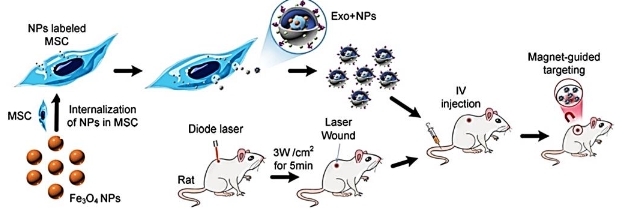Formulation and development of topical nano-emulgel TDDS for delivering Vitex Negundo as a painkiller: Enhancing effectiveness with natural essential oil permeation promoters in an innovative drug delivery system for rheumatoid arthritis treatment—A NDDS
Abstract
Vitex negundo is a powerful herbal anti-inflammatory with effects similar to those of non-steroidal anti-inflammatory drugs (NSAIDs), which are commonly used to treat rheumatoid arthritis. Despite its benefits, Vitex negundo shares some drawbacks with NSAIDs, including gastrointestinal side effects such as vomiting and poor transdermal penetration, which limits its effectiveness in transdermal and gastrointestinal drug delivery. This study aimed to enhance the bioavailability of Vitex negundo by developing nano-emulgel with reduced particle size and to assess their effectiveness in treating rheumatoid arthritis. The researchers utilised a modified emulsification-diffusion method to create nanosized dispersions of Vitex negundo, incorporating hydroxypropyl methylcellulose (HPMC) as a gelling agent. Essential oils were also included to improve skin penetration by interacting with the stratum corneum (SC), thus enhancing the absorption of both lipophilic and hydrophilic drugs. The prepared Vitex negundo nano-emulgel were evaluated for various parameters, including rheology, particle size, drug content, drug release percentage, and in-vitro diffusion. The results indicated favourable properties: the particle size was 120.10 nm, the zeta potential was ± 30 mV, drug content was 99.50%, drug release percentage was 98.92%, and drug diffusion was approximately 98%. The formulation also had a pH of 6.8 ± 0.1. Overall, the Vitex negundo nano-emulgel, formulated with HPMC and eucalyptus oil as a permeation enhancer, demonstrated potential as an effective topical treatment for oedema and rheumatoid arthritis. “The study illustrates the formulation process of a drug blended with a polymer matrix. The drug is uniformly dispersed within the polymer matrix through high-shear mixing, ensuring optimal integration and consistency in the final product. The process involves high-shear blending to achieve a homogenous mixture, enhancing the drug’s stability and release characteristics within the polymer matrix.”
References
[1]Saurabh DB, Sarika SM, Mosami MP, & Vijay DW. Formulation and development of topical anti-acne gel using a polymer blend and incorporation of natural polyphenols into a synthetic topical drug gel-based matrix. World Journal of Pharmaceutical Research. 2023; 12(4): 1407-1444. doi: 10.20959/wjpr20234-27310
[2]Adarshan S, Muthuramalingam P, Jeyasri R, et al. Vitex negundo L. derived specialized molecules unveil the multi-targeted therapeutic avenues against COPD: a systems pharmacology approach. Frontiers in Bioscience-Landmark. 2022; 27(3). doi: 10.31083/j.fbl2703087
[3]Dharmasiri MG, Jayakody JR, Galhena G, et al. Anti-inflammatory and analgesic activities of mature fresh leaves of Vitex negundo. J Ethnopharmacol. 2003; 87(2-3): 199-206. doi: 10.1016/s0378-8741(03)00159-4
[4]Han X, Li L, Xie J, et al. Vitexin promotes the anti-senescence effect via inhibiting JAK2/STAT3 in D-Galactose-induced progeria mice and stress-induced premature senescence. European Journal of Pharmacology. 2024; 980: 176865. doi: 10.1016/j.ejphar.2024.176865
[5]Sharma D, Radha, Kumar M, et al. Chemical Diversity and Medicinal Potential ofVitex negundoL: From Traditional Knowledge to Modern Clinical Trials. Chemistry & Biodiversity. 2023; 20(11). doi: 10.1002/cbdv.202301086
[6]Meek IL, Van de Laar MAFJ, E. Vonkeman H. Non-Steroidal Anti-Inflammatory Drugs: An Overview of Cardiovascular Risks. Pharmaceuticals. 2010; 3(7): 2146-2162. doi: 10.3390/ph3072146
[7]Demiralay EC, Yılmaz H. Potentiometric pKa Determination of Piroxicam and Vitex negundo in Acetonitrile-Water Binary Mixtures. SDU Journal of Science (E-Journal). 2012; 7(1): 34-44.
[8]D’Mello P, Kulkarni R, Virkar A. Antioxidant and antiinflammatory activity ofVitex negundo. Indian Journal of Pharmaceutical Sciences. 2008; 70(6): 838. doi: 10.4103/0250-474x.49140
[9]Brown MB, Martin GP, Jones SA, et al. Dermal and Transdermal Drug Delivery Systems: Current and Future Prospects. Drug Delivery. 2006; 13(3): 175-187. doi: 10.1080/10717540500455975
[10]Zheng CJ, Qin LP. Five-Leaved Chaste Tree (Vitex negundo) Seeds and Antinociceptive Effects. Nuts and Seeds in Health and Disease Prevention. 2011; 479-486. doi: 10.1016/b978-0-12-375688-6.10057-x
[11]Nyamweya B, Rukshala D, Fernando N, et al. Cardioprotective Effects of Vitex negundo: A Review of Bioactive Extracts and Compounds. Journal of Evidence-Based Integrative Medicine. 2023; 28. doi: 10.1177/2515690x231176622
[12]Kurpiers M, Wolf JD, Steinbring C, et al. Zeta potential changing nanoemulsions based on phosphate moiety cleavage of a PEGylated surfactant. Journal of Molecular Liquids. 2020; 316: 113868. doi: 10.1016/j.molliq.2020.113868
[13]Wu Q, Zheng J, Yu Y, et al. Analysis of Antioxidant Compounds in Vitex negundo Leaves Using Offline 2D-LC-ECD and LC-MS/MS. Molecules. 2024; 29(13): 3133. doi: 10.3390/molecules29133133
[14]Gu C, Wang YQ, Su BJ, et al. Triterpenoids and triterpenoid saponins from Vitex negundo and their anti-inflammatory activities. Phytochemistry. 2024; 222: 114068. doi: 10.1016/j.phytochem.2024.114068
[15]Vitex negundo (Chastetree, Chinese caste tree, Five-leaved Chaste Tree, Horseshoe Vitex) |North Carolina Extension Gardener Plant Toolbox. Available online: https://plants.ces.ncsu.edu/plants/vitex-negundo/ (accessed on 15 May 2024).
[16]Saurabh DB, Kumar DB, & Malode SS. Formulation, development, and evaluation of an antacid made using laboratory chemicals and common herbal ingredients blended into a suitable desired liquid formulation/preparation for internal administration to the patient with hyperacidity. European Journal of Biomedical AND Pharmaceutical Sciences. 2023; 10(6): 213-236.
[17]Saurabh DB, Sarika SM, Niphade SS, et al. Preparation and evaluation of herbal hair growth and hair cleansing shampoo. World Journal of Pharmaceutical Research. 2022; 11(16): 2226-2270.
Copyright (c) 2024 Bhandare Saurabh Dilip, Malode Sarika Shivaji

This work is licensed under a Creative Commons Attribution 4.0 International License.
Authors contributing to this journal agree to publish their articles under the Creative Commons Attribution 4.0 International License, allowing third parties to share their work (copy, distribute, transmit) and to adapt it for any purpose, even commercially, under the condition that the authors are given credit. With this license, authors hold the copyright.











